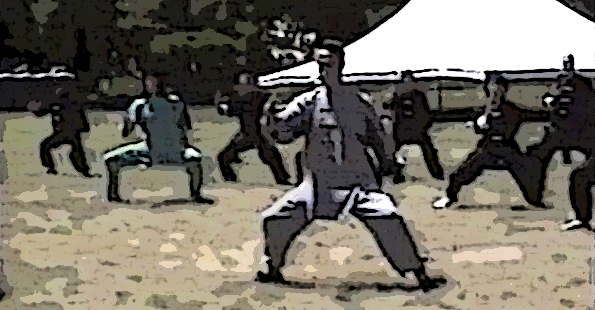I intend to continue in this article to present the Tai Chi Farm exercises which have been explained in a series format in my previous articles.
While writing about the exercises, I almost neglected one important aspect. They are not to be practiced as an end, but as a tool. This tool is seen as the living embodiment of the Tai Chi principles. These principles are meant to be visible in one’s everyday movement, one’s push hands practice, and if possible, one’s practice in sparring.
But nowhere are the principles displayed in the exercises more showcased as they are in the Chen1 form of master Jou. But even having said that, it is best that they are practiced to such an extent that their traces can be seen in all of one’s Tai Chi forms.
From at least 1980 till the time of his transition, Jou Tsung Hwa had been working on a Chen1 routine
(he stated that the 1st routine came after Cannon Fist) that got away from where the Chen routines he had seen were headed. Independent hand and foot movement, push hands wrestling, and other non-Tai Chi elements were what he was against.
Master Jou’s version of Chen1 is very different from the standard routines that we are used to seeing. There are more leg raises, some moves are more reminiscent of the Yang form, and the “Wave Hands In Clouds” reminds me a little of the Hao form. Actually, the Tai Chi Farm exercises are more of a clue to the Tai Chi Farm Chen form than anything else. There is contraction and expansion, intense spiraling, a great deal of matching of different parts of the body, and total whole body movement.
Tai Chi Farm Exercise
Place the left foot to the left of the right foot and to the front with the left heel raised and the toes facing 9:30 or 10:00. The weight of the bodt is on the right foot which is solidly on the ground with the toes facing approximately 2:00 or 2:30. The right hand is placed gently on the abdomen where it remains. The head and the eyes face forward with the abdomen relaxed. Begin to contract the abdomen as the head and eyes and body turn towards the left hand which is rotating the left palm upwards as the left heel turns towards the right front reaching the maximum movement with the abdomen fully contracted and the left palm facing the sky and eyes facing the palm with the head upright. Reverse the movement and return to the original position. From the original position, begin turning the body towards the right as the left palm begins turning and ending facing downward with the body now facing 2:00 or 2:30 [the same direction as the right toes]. At this point, the abdomen is fully expanded. Reverse the movement and return to the original position. After enough repetitions, switch feet and hands. The right hand remains on the abdomen throughout th entire exercise.
Both hands can be placed over both feet, or the opposite palm can be used instead. Also one foot can be raised entirely off the ground. Ultimately, one has to find out the angles and placements best for one’s self.
There are quite a few of these Tai Chi Farm exercises with some being more complicated and difficult than the one[s] presented here. Some of them I don’t like and nver practice, and some of them I really like and almost always practice. Any variations that I present are not of my own making so as to keep what I learned pure.
Although I have spoken of some of the original students in Piscataway previously, I must once again thank Tai Chi Farm students Bob Arietta for his valuable instruction of these exercises and Mike Goldstein.
Most of all I must thank my Tai Chi instructor Larry Banks whom I have also written about. The idea for this series on the Tai Chi Farm Exercises and other experiences was inspired by Loretta Wollering’s presentation of Master Jou’s 6 part interview on YouTube in 1994 at the Tai Chi Farm.

Leave a Reply